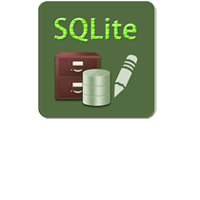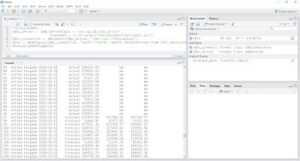

The id column is of integer type, and the data column is of BLOB type, used to store arbitrary file data. 4 Answers Sorted by: 3 SQLite does not fake Date with Numeric s. Suppose we have a table named files with two columns: id and data. Finally, we use the mit function to commit the transaction and close the connection. Note that we use SQLite’s Binary function to convert the image data into a binary format that SQLite can recognize. Next, we use the conn.execute function to insert the image data into the images table. Then, we use Python’s built-in open function to read the image file and store it in the image_data variable. In the above code, we first open a connection to the SQLite database. execute ( 'INSERT INTO images (data) VALUES (?)', ) # Commit the transaction conn. read () # Insert the image data into the database conn.


connect ( 'mydatabase.db' ) # Read the image file with open ( 'image.png', 'rb' ) as file : image_data = file. To add this kind of support for custom types, you provide a TypeConverter, which converts a custom class to and from a known type that Room can persist.Import sqlite3 # Open a connection to the database conn = sqlite3. Sometimes, your app needs to use a custom data type, like DateTime whose value you would like to store in a single database column. INTEGER as Unix Time, the number of seconds since 00:00:00 UTC.Īpplications can choose to store dates and times in any of these formats and freely convert between formats using the built-in date and time functions. SQLite only has four primitive data types: INTEGER, REAL, TEXT, and BLOB.according to the proleptic Gregorian calendar. REAL as Julian day numbers, the number of days since noon in Greenwich on NovemB.C.Let's look at the common datatypes names that SQLite lets you define. Compilation Options This document describes the compile time options that may be set to modify the default behavior of the library or omit.
Sqlite data types software#
TEXT as ISO8601 strings (“YYYY-MM-DD HH:MM:SS.SSS”). PostgreSQL SQLite Unique Constraints To be compatible with other SQL databases, SQLite allows you to use the common datatype names that you've seen in other databases and maps them to their basic SQLite datatypes (listed above). SQLite File Format A description of the format used for SQLite database and journal files, and other details required to create software to read and write SQLite databases without using SQLite.(But see type affinity and coercions.) See Manifest Typing in the 'differences' documentation. SQLite for Python offers fewer data types than other SQL implementations. Basically, it accepts the standard SQL syntax but otherwise ignores it. Data Types Available in SQLite for Python. Instead, the built-in Date and Time Functions of SQLite are capable of storing dates and times as TEXT, REAL, or INTEGER values: SQLite 'mock implements' data-types on columns.

SQLite does not have a storage class for storing dates and/or times. So an attempt to insert the string '123' results in an integer 123 being inserted. For example, if a table column has a type of 'INTEGER', then SQLite tries to convert anything inserted into that column into an integer. In this article, I shed light on some very confusing issues regarding select queries using Date. Introduction SQLite strives to be flexible regarding the datatype of the content that it stores. Note: The 'BLOB' data type used to be called 'NONE'. I see more questions in online public discussion forums about this type than any other. REAL TEXT BLOB To be compatible with other SQL databases, SQLite allows to use the common datatype names which is used in other databases and maps them to their basic SQLite datatypes (listed above). One of the most interesting and confusing data types that SQLite not supports is Date and Time.


 0 kommentar(er)
0 kommentar(er)
